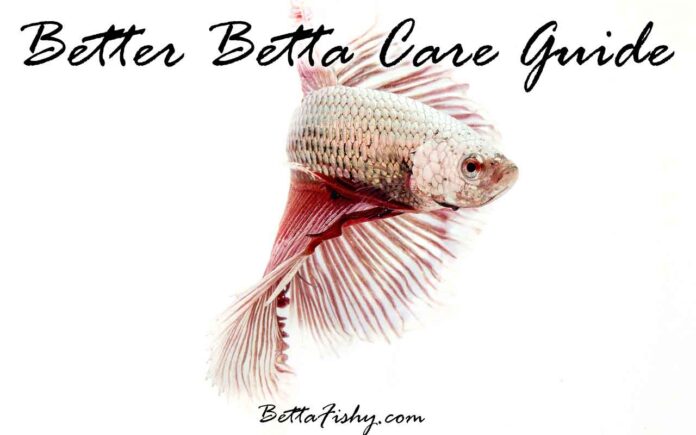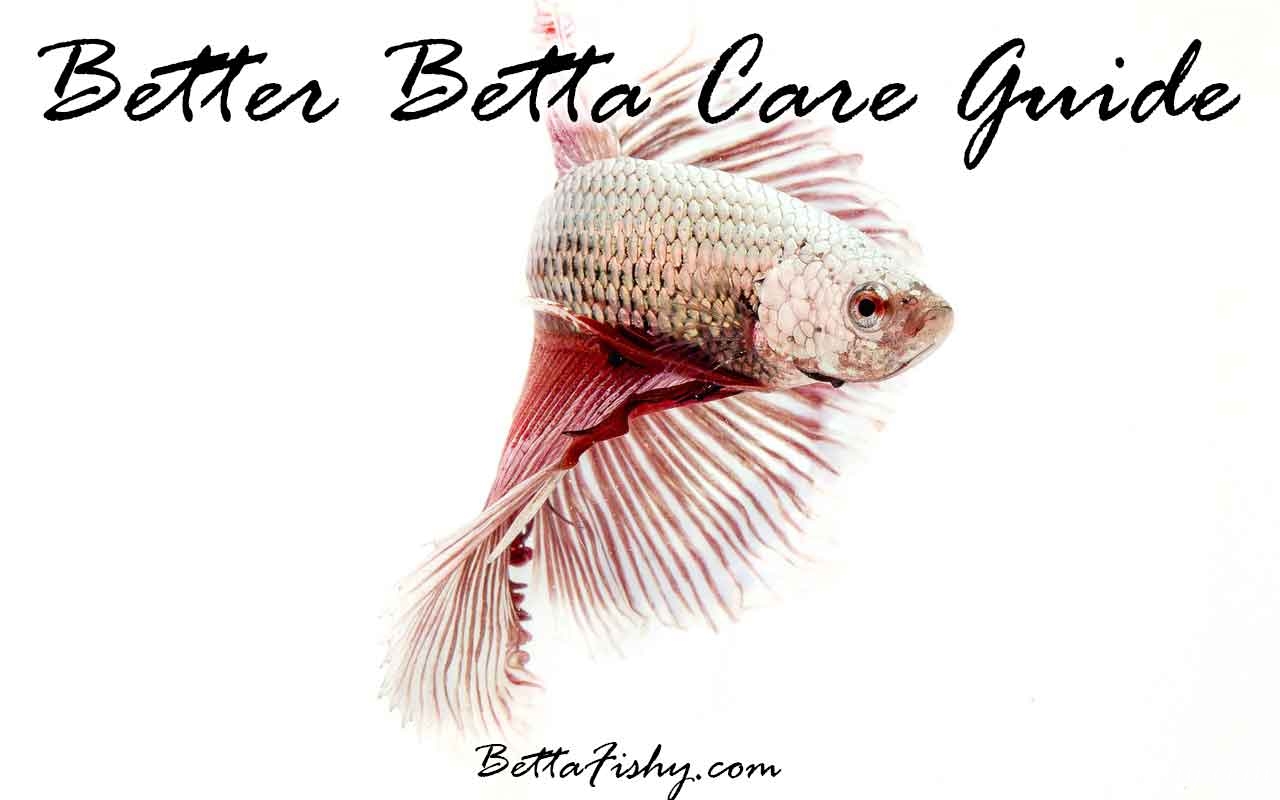How To Take Care Of A Betta Fish
Learning how to take care of a Betta fish properly is easy and fun for beginners!
Are you looking to bring home a new Betta Fishy family member? Or maybe you already have your feisty Betta fishy and are looking to go over the general care requirements for him/her? Whatever the case may be, here you will find a simple, generalized guide explaining how to care for a Betta fish. You must take that for what it is though. This is a very generalized Betta care guide. Learning how to take care of a Betta fish properly is easy and fun for beginners! As you gain time and experience, you will find that there is always something new you can learn. You will see that there are many different opinions on how to properly take care of Bettas. As with anything involving the care of an animal, you are encouraged to branch out from here and seek guidance from various sources you find along the way!
The Alpha Betta
- Betta fish (Latin: Betta splendens) are also known as Siamese fighting fish.
- Bettas native habitat are in the tropical climate zone around Thailand. Believe it or not, you can find them swimming in the huge rice paddies there.
- The average lifespan of a well cared after Betta fish is approximately 2-4 years.
Betta Behave
They are known as “Fighting Fish” for a reason!
- First and foremost, never house more than one male Betta in the same aquarium. They are known as “Fighting Fish” for a reason! They will fight each other, and often only one male Betta will be left swimming.
- Please do not place male and female Bettas in the same aquarium unless for the intentional purpose of breeding. Even in that case, they should only be placed together temporarily. Breeding Bettas is not as simple of a procedure as it sounds and in-depth study on the subject must be done in order to minimize the risk of your fish becoming injured or worse.
- You can house female Bettas together in Betta “sororities”, but please maintain a minimum of 5 female Bettas in a, no smaller than, 10-15 gallon aquarium. If you choose to group a sorority of female Bettas together, observe them closely and separate them if you see aggressive behavior.
- Betta fish have a unique organ called the “Labyrinth” that they use to take oxygen from the air. Yes, the air and not from the water alone. Although, betta fish do have gills and use them like any other fish would. Take care that the surface of the water in the aquarium is never blocked or your Betta will not be able to breath! This interesting “Labyrinth” organ is also what the Betta uses to make bubble nests.
- While Bettas are (in general) solitary fish, they will swim well with other varieties of fishes. If interested in keeping other types of fish in the same aquarium as your Betta, look for non-aggressive and small finned species. Small finned because Bettas are known to nip at long, colorful fins of other fishes.
- Please consider covering the top of the aquarium your Betta is housed in. Bettas love to jump. They just don’t know to keep their landing limited to inside their aquarium.
Looking for Betta Housing
A bare minimum size tank should be 2.5 gallons, but 5+ gallons is better.
- While we have all seen Bettas housed in jar sized aquariums and typically sized, 1 gallon fish bowls, please don’t subject your Betta to these tiny “homes”. Bettas are flighty fish and love to stretch their fins while exploring. A bare minimum size tank should be 2.5 gallons, but 5+ gallons is better.
- As mentioned before, Betta fish come from tropical climates. Therefore aquarium temperatures should be maintained between 78-80 degrees. Unless you live in a tropical climate, an aquarium heater should be considered to keep your Betta happy and healthy. One thing to note is that room temperatures outside of the aquarium will be several degrees warmer than the temperature of the water inside. A thermometer should be used to ensure the proper temperature of the aquarium. You do not want to end up with frozen or cooked Betta fish-sticks.
- While a mechanical aquarium filter is not necessary, it can be useful in certain aquarium set-ups. If you choose to use an aquarium filter, make sure that the flow setting is set to gentle. Also ensure that you have taken precautions to ensure that your Bettas fins do not get caught in any part of the filter mechanism. That precaution really doesn’t often need to be stated but, there are some filters out there (none that would be recommended here) that have less than desirable design.
- If you choose to include plants in your Betta aquarium design, consider using silk plants. Betta fins are quite delicate and damage easily. You can use live plants effectively, just think about the fins when choosing them. A happy Betta will spend a lot of time “fluffing” himself up and zipping around the tank. The term “getting snagged” is bad to hear in reference to a fish you don’t plan to eat.
- Bettas love to hide! Providing your Betta with a hiding spot is a great idea. Things like ceramic coffee cups and similar lidless containers work just fine. If you choose to use something from around the house, be sure that the material of the “hiding spot” will not rust or otherwise contaminate the water in the aquarium. And of course, be sure that the “hiding spot” doesn’t have any sharp edges or joints to snag your fishy.
Betta than Good Housekeeping
The water in the Bettas aquarium needs to be changed regularly.
- The water in the Bettas aquarium needs to be changed regularly. The waste produced from your fish will naturally produce ammonia in the water. Ammonia is deadly to Bettas in even the smallest amounts. As a general rule and approach, unfiltered aquariums need 50% of their water changed twice per week. That means that 100% of their water is changed completely every week. Please do not change out 100% of the water all at once in effort to save yourself a step. Changing all of the water all at once is harmful to the Bettas sensitive self, and the natural aquarium environment in general.
- It is very important that the temperature of the water you are filling the aquarium up with is the same temperature as the water you previously removed. If the water you are adding to the existing water in the tank is a different temperature, you will run the risk of “shocking” your Betta. Fish, in general, are quite sensitive to water temperature change. The temperatures do not have to differ too greatly to cause them harm. You can opt to remove your Betta from the tank before you add the new water. If you choose to do so, float your Betta in a cup with the “old” water in it, in the tank with the new water. This will gradually equalize the temperature differences. This procedure is not hard to do at all. Being extra cautious can’t hurt.
- An aquarium that is 5 gallons or more that has mechanically cycled and filtered water will only need a 20% change of water once per week. With these set-ups you should also use a gravel vacuum to pick up the waste from the bottom the the tank.
- Store bought water conditioners are a must! Brands such as Seachem Prime and AquaSafe are inexpensive and will help your fish thrive in the, previously toxic, tap water environment.
Betta Fish Food
Feeding your Betta fish a Betta specific pellet will help ensure that your Betta is happy and healthy.
- Betta fish are essentially carnivorous! Feeding your Betta fish a Betta specific pellet will help ensure that your Betta is happy and healthy. These Betta specific fish foods are tailor-made for Bettas and are adequately high in protein and other Betta needed ingredients than the standard fish food. Look at the labels for ingredients such as shrimp and fish meal.
- Variety is the spice of life when dining, and your Betta thinks so too! Many Bettas love it when you add freeze-dried bloodworms and brine shrimp to their menu. Glass worms are a delicacy to your Betta fishy! These kinds of feedings should be considered as “treats” and shouldn’t be offered more than once per week. This will help avoid bloating. Nobody likes bloating.
- Overfeeding your Betta can be an issue if you are not careful. If feeding a pellet based Betta food, 3 to 4 pellets once or twice per day is recommended for the average Betta fish. If you drop the pellets in one at a time, your Betta will be less likely to miss them falling to the bottom and getting lost. This also reduces extra waste in the aquarium. If your Betta is done eating after only one pellet, remove any other pellets in the aquarium that were left, daily.
- Another rule of thumb when trying to figure out just how much to feed your betta is: Feed only what your betta will eat in 2 minutes, and not a second more. Whatever food left after those 2 minutes are up, pick up and out of the betta’s aquarium.
Betta Be Healthy
Bettas are very active and playful fish that need their space to explore!
- Everybody gets sick once in awhile, and Bettas are no exception. Careful observation of your Betta will ensure that you are able to catch any oncoming health problems before they become untreatable.
- If you notice that your Betta fish is acting slow and lethargic, the temperature of the water is most likely the cause. Remember that the minimum of 78-80 degrees is required for a healthy Betta. Investing in an aquarium heater and a thermometer is a smart move on your part that your Betta will thank you for!
- If you notice that your Betta is missing small pieces of its tail or fins, or if they appear frayed at the ends, your Betta may have fin rot. As fin rot is most often caused by excessive ammonia in the aquarium, an ammonia test should be taken. An acceptable ammonia reading is zero. Any ammonia is harmful to your Betta. You should also replace all of the water in the aquarium at this time. You may also look into treating your aquarium with store bought aquarium salt.
- Another cause of missing tail and fin bits is a condition called fin biting. Fin biting is often the result of Betta boredom. Often, Betta boredom is the result of not having enough space to swim about and lack of decent hiding places. Bettas are very active and playful fish that need their space to explore!
A Betta Care Video!
Everybody love watching videos, and some people really learn more through them. After digging though many (really, more than many) betta fish care videos online, this one stood out among the rest as the best! The reason the video appears at the bottom of this page, rather than the top, is that you really should be encouraged to read through the whole page beforehand, and then watch the video.
You will probably pick out a few tiny details in the video that differ from what is written above, but the differences are small enough that they really don’t matter too much. Except for one point… it is highly recommended that you follow our guidelines for the water temperature between 78F-80F. This will help promote a longer and healthier life for your betta. Other than that, enjoy the video and click through to like & subscribe to the presenters channel! Really did an awesome job with this feature presentation!



